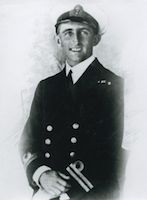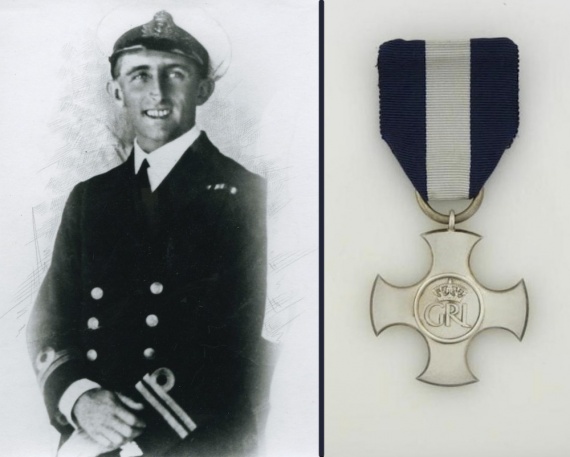Commander John Francis Rayment

John Francis Rayment was born in Sydney, NSW, on 20 August 1900. He entered the Royal Australian Naval College (RANC) as a Cadet Midshipman on 31 December 1913 as a member of the 1914 entry. During his time at the RANC he proved to be a good sportsman, gaining his colours for rugby and athletics. Rayment was also made a Cadet Captain and on passing out was awarded "maximum time" and the prize for mathematics.
Rayment was appointed Midshipmen on 1 January 1918 before embarking for overseas service in the United Kingdom (UK). There he joined the battle cruiser HMAS Australia (I) which at that time was serving as part of the Royal Navy's Grand Fleet. On 1 September 1919 he was promoted Sub Lieutenant before joining the destroyer HMAS Swan (I) on 1 October 1919. Between 1919 and 1921 he served variously in HMA Ships Swan (I), Australia (I), Anzac (I) and Swordsman during which time he was promoted Lieutenant on 1 December 1920.
During 1922 Lieutenant Rayment undertook further training in the UK specialising in navigation. Further sea-going appointments followed in HMS Royal Sovereign HMA Ships Anzac, Brisbane, Melbourne, Adelaide and HM Ships Champion, Argus, Carysfort and Queen Elizabeth. During that period he held a number of appointments as Navigating Officer and was subsequently promoted Lieutenant Commander on 1 December 1928.
Lieutenant Commander Rayment was appointed Officer-in-Charge of the RAN Hydrographic Depot, Sydney, in December 1932, a position he held for four months, pending the availability of Lieutenant Commander (H) CG Little who, at that time, was otherwise engaged in survey operations in Queensland. At the same time he was appointed the Master Attendant in Sydney.
In July 1933 Rayment joined the heavy cruiser HMAS Australia (II) in which he served for 12 months before being posted to HMAS Cerberus for duties in Navy Office, Melbourne. This was followed by a further period as the Master Attendant in Sydney.
On the outbreak of World War II, Lieutenant Commander Rayment returned to sea as the Intelligence Officer in HMAS Australia (II). On 24 December 1941 he was promoted Acting Commander and appointed Squadron Navigating Officer when Australia became the RAN flagship.
Australia saw extensive service throughout the Pacific theatre of operations and was often in the thick of action. For his "skill, resolution and coolness" during the Solomon Islands campaign, Commander Rayment was awarded the Distinguished Service Cross. In June 1944 he was mentioned in dispatches for "outstanding zeal and devotion to duty while serving in HMAS Australia in the operations which led to the capture of the western end of New Britain".
On 21 October 1944 during operations in Leyte Gulf in the Philippines, Australia (II) was hit by a Japanese suicide plane which crashed into the foremast. Six officers and 23 ratings were killed and her Commanding Officer, Captain EFV Dechaineux DSC, RAN, and Commander Rayment both died of wounds. This form of attack was to be the first of many upon Australian and US ships in the Pacific War.
Commander Rayment's son, Mike, followed in his father's footsteps, joining the Royal Australian Naval College in 1947. He later attained the rank of Commodore and in retirement was reunited with his father's binoculars in October 1996.
See page 4 of Navy News, 21 October 1996: https://seapower.navy.gov.au/sites/default/files/documents/Navy_News-October-21-1996.pdf



